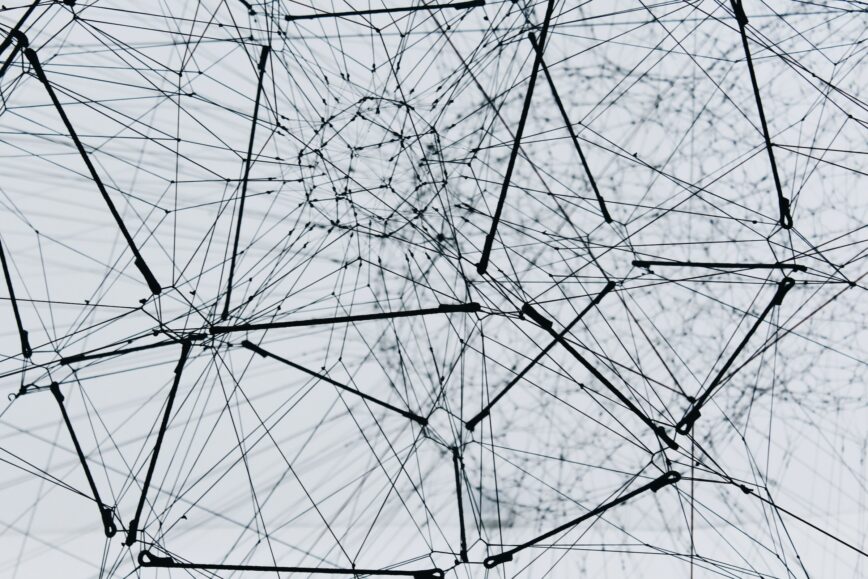Russia is far from China’s most important technological partner. Yet as the outcomes of Xi Jinping’s recent visit to Moscow confirm, Europeans will need to live with a China-Russia partnership that is increasingly focused on high technology. As foreign sanctions drive Russia into rising economic integration with China, and as China’s access to Western markets and partnerships comes under increasing pressure, Beijing will play both sides in its quest to build technological power.
The visit by Chinese President Xi Jinping to Moscow earlier this year left observers underwhelmed with its outcomes, which could be interpreted as showing China’s reluctance to tie itself to a sinking ship. Notably absent from the visit’s lengthy joint statement was the reference to ‘unlimited partnership’ that characterised the joint statement from Putin’s visit to Beijing in February last year, just before Russia’s invasion of Ukraine. European leaders are doubtless taking comfort from this, even as they fret about how to persuade China to deny Russia any support to prosecute its war.
But while China will clearly not honour the blank check of ‘unlimited partnership’, the prospect of it aligning against Russia is still more remote. This is not a matter of ideological solidarity, or even of Xi’s personal relationship with Putin, but a rational strategy dictated by external factors: namely, shared threat perceptions of the US. With Xi declaring a week before his visit to Moscow that China faces ‘all-round containment and suppression’ by ‘Western countries, led by the United States’, it is not realistic to expect that he will turn away from the only major power guaranteed to be in China’s corner against Washington. In the context of seemingly permanent Sino-US antagonism, nothing Western leaders can offer Beijing is worth its abandoning Russia.
This leaves Beijing walking a tightrope between keeping Russia viable as a strategic partner and placating the US-aligned countries that account for the lion’s share of China’s foreign trade and technological exchanges. In a recent report, I traced the state of China-Russia cooperation across a range of high technologies. For most of these fields, actual bilateral activity has been modest, compared to China’s research and industry collaborations with other national partners.
Even in those fields of aerospace and military-use technology where Russian legacy knowledge and research capabilities remain attractive, the assets are wasting, as Chinese capabilities improve just as Russia’s R&D complex suffers under sanctions and skilled labour flight. The Russian military’s lacklustre performance in Ukraine is also doubtless leading to reappraisals on the Chinese side, although operational failures do not mean that Russian military technology lacks potential: even before 2022, there were signs that the Chinese military may be incorporating some products of the Russian defence industrial complex more effectively than Russia’s own armed forces.
China’s leading partners in technological progress have not been Russian, but rather states from the US-allied group, which still dominates many of the commanding heights of complex technologies and supply chains. Despite much talk of ‘decoupling’ China and the Western economies, it is at best a tortured and uneven process, with even the US government disavowing complete decoupling as a policy goal. Aligning allied governments with US measures aimed at restricting China’s access to leading-edge technologies is proving fraught in practice.
China’s leaders seem confident in being able to pursue opportunities with Russia without being totally cut off from the advanced US-allied economies, at least to any extent than that already implied by Washington’s turn to technological containment. Despite relative decline, Russia is still among the world’s dozen largest economies and among the richest in certain natural resources. And despite Russian industry’s parlous state, Russia’s research complex (R&D) is still world class in some fields. As Chinese access to markets and partnerships in US-allied countries comes under growing political pressure, it is only rational for the Chinese to pursue alternatives in a neighbouring economy of Russia’s size, benefiting from the leverage granted them by Russia’s lack of alternative partners.
During Xi’s visit to Moscow, the two sides signed a raft of agreements on economic and technological matters, including cooperation in fundamental scientific research and on nuclear energy. To quote Putin himself, from the official Russian coverage of Xi’s visit:
Technological sovereignty is the key to sustainability. We propose further improving strategic partnerships in specific industries. By combining our wealth of research capacity and industrial capabilities, Russia and China can become world leaders in information technology, cyber security, and artificial intelligence.
The joint statement on priorities in China-Russia economic cooperation further made clear the intent to double down on exchanges in high technologies, technical standards and supply chains, all of which have become a focus of conflict in both countries’ relations with the US and its allies:
Promote exchanges and high-quality cooperation in the field of technology and innovation to ensure a high level of technological development between the two countries.
Promote quality and upgrading of industrial cooperation. On the basis of dovetailing industry standards and technical requirements, create new industrial chains involving local industrial enterprises of both countries to enhance added value.
Russian hopes that partnership with China will enable it to decisively plug the technological gaps targeted by foreign sanctions are likely misplaced. For instance, ambitious plans to upgrade Russia’s threadbare semiconductor industry with Chinese help seem impossibly ambitious, given Chinese industry’s own limited capacities in this global value chain and expanding US export controls designed to keep things that way. But as shown by flows over the past year of microelectronics from China to Russia through third countries and networks of unauthorised dealers and shell companies, good relations with Beijing will help Russia sustain its economy and industry through short term crises, in the face of a US-led sanctions coalition whose staying power has yet to be really tested.
From Beijing’s viewpoint, so long as China is not sucked into the sanctions maelstrom or into propping up unviable Russian industries, there is significant upside to Russia’s growing economic dependence on it. Russia has already seen a dramatic reorientation in its foreign trade towards China, which in 2022 accounted for 40% of Russia’s imports and 30% of exports. This trend will accelerate as US and EU sanctions on Russia tighten. It brings with it rising use of the yuan in Russia, with Putin supporting the Chinese currency’s use in Russia’s transactions with trading partners in Asia, Africa and Latin America. While this will not challenge the US dollar’s global dominance, it will have a useful demonstration effect for the many countries continuing to expand trade with China, some of which are also now seeking hedges against their reliance on the dollar.
For China, industrial and scientific cooperation with Russia is just one piece of a broad-based strategy to build economic and technological power. Where forced to choose between Russian and European partners in science and technology, in most cases Chinese actors would undoubtedly choose the European option, even if sanctions are removed from the equation. But for the most part it does not seem the Chinese will be forced to make this choice, even if angst is growing around European capitals over deepening Sino-Russian ties and implications for the strategic environment.
So far, the EU and its most powerful Member States have stuck to their conceptual framing of China as simultaneously a partner, competitor and rival. European leaders believe in, or see no alternative to, reconciling this approach to strategic partnership with a US that now unequivocally treats China as an adversary. Beijing is simply playing the same game, expecting Europe to swallow China’s strategic partnership with a state now seen as an enemy by growing numbers of Europeans.
______
Thumbnail image credits: @alinnnaaaa on @Unsplash.




